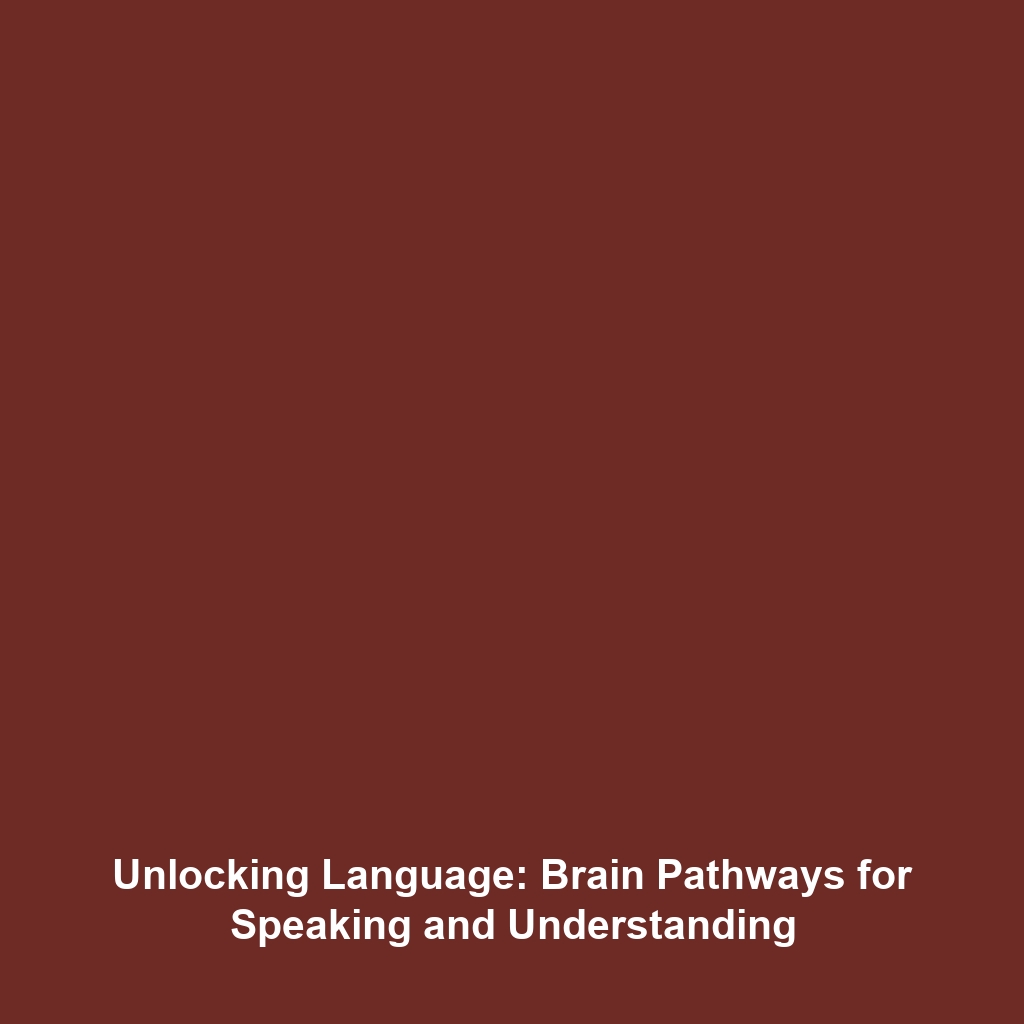Language Processing Pathways: The Interaction between Different Brain Regions for Speaking, Reading, and Understanding Language
Understanding the intricate language processing pathways is crucial in the realm of biomechanics, as these pathways facilitate fundamental human capabilities such as speaking, reading, and comprehending language. The optimal functioning of these pathways is not only essential for effective communication but also offers insights into neuromuscular coordination and cognitive processing. This article delves into the neuroanatomy of language processing, the biomechanics that support these functions, and the implications of research in this dynamic field.
Key Concepts of Language Processing Pathways
Language processing involves the interaction of multiple brain regions, each responsible for various aspects of language. Key concepts in this area include:
- Broca’s Area: Located in the frontal lobe, responsible for speech production and language processing.
- Wernicke’s Area: Found in the temporal lobe, critical for language comprehension.
- Arcuate Fasciculus: The neural pathway connecting Broca’s and Wernicke’s areas, facilitating communication between these regions.
- Supramarginal Gyri: Involved in phonological processing and articulate language perception.
These regions work together to process linguistic input, and their interaction is vital for coherent speech and effective reading skills. Additionally, understanding the biomechanics involved in the neural control of articulation and speech dynamics provides insights into how physical movements are intricately linked to cognitive functions.
Applications and Real-World Uses
The study of language processing pathways has numerous practical applications, particularly in biomechanics. Some notable uses include:
- Speech Therapy: Techniques developed based on an understanding of language pathways assist individuals with speech impairments.
- Neuromuscular Re-Automatization: Programs that integrate cognitive and physical training to improve language skills through enhanced motor control.
- Assistive Technologies: Development of AI applications that aid in language comprehension and production for individuals with speech and language disorders.
These applications emphasize how language processing pathways are utilized in improving outcomes in biomechanics, showcasing an intersection of cognitive and physical rehabilitation techniques.
Current Challenges in Studying Language Processing
Despite the advancements in understanding language processing pathways, researchers face several challenges, including:
- Variability in Brain Anatomy: Individual differences in brain structure can complicate the study and application of findings.
- Data Integration: Integrating findings from various neuroimaging techniques can be problematic.
- Complex Interaction: The multifaceted nature of language processing involves a collaboration of cognitive, sensory, and motor functions that make it difficult to isolate specific pathways.
- Ethical Considerations: Conducting research on human subjects involves ethical limitations that can restrict experimental designs.
Future Research and Innovations
The future of research into language processing pathways holds exciting potential for innovations that could revolutionize the field of biomechanics. Key areas of focus include:
- Neuroplasticity Studies: Investigating how the brain adapts and rewires in response to language learning and therapy.
- Next-Gen Brain-Machine Interfaces: Developing advanced systems that enable communication for individuals with severe speech impairments by harnessing brain activity.
- AI and Machine Learning: Employing AI in language processing models to enhance rehabilitation techniques, using real-time data to tailor approaches for individual needs.
Conclusion
In summary, the interaction between different brain regions for speaking, reading, and understanding language plays a significant role in biomechanics. Advances in our understanding of these language processing pathways not only enhance communication therapies but also bridge neurological insights with physical movement dynamics. To further explore related topics, consider reading about the impacts of neuroplasticity on cognitive functions, or delve into AI applications in speech rehabilitation.

Leave a Reply